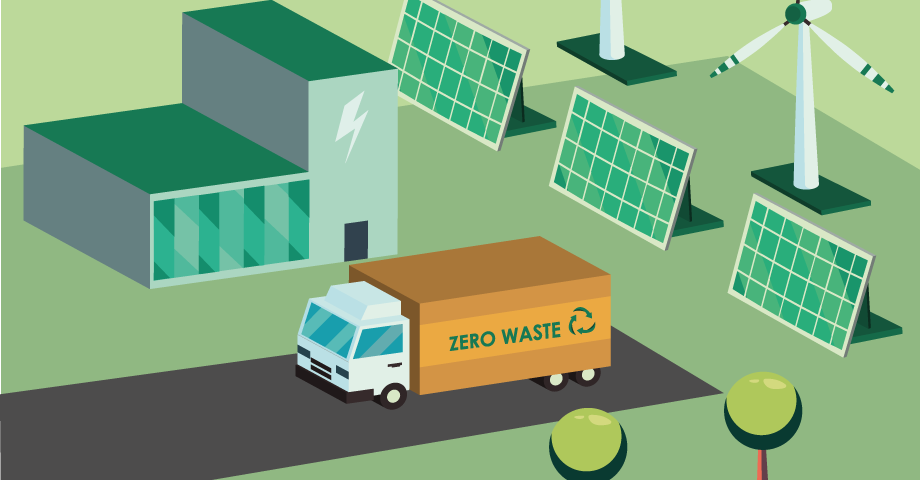Brownfield development, which primarily transforms contaminated sites into housing, retail, or park space, may be the next frontier in real estate. Development teams and communities alike can benefit from brownfield redevelopment, as the projects create much-needed housing in high-demand areas without degrading green space, which increases local tax bases, and creates new jobs.
Developers will find the projects come with unique challenges, requiring additional community outreach to secure zoning approval, a comprehensive stakeholder communication strategy, and greater capital for clean up. However, brownfield redevelopment can also have great rewards for adventurous developers, as they can be located in desirable neighborhoods or regions at low acquisition cost and eligible for funding from state and local remediation grants.
Here’s why EPA-designated brownfields, of which there are an estimated 450,000 in the United States, present a unique opportunity for real estate developers to turn contaminated sites into valuable assets.
Understanding Brownfield Development
Brownfield sites, also called brownfield land or brownfields, is an urban development term referring to areas of land once used for commercial or industrial purposes such as warehouses, factories, gas stations, or dry cleaners. The Environmental Protection Agency defines a brownfield as any property where the expansion, redevelopment, or reuse of which is complicated by the presence or potential presence of hazardous materials, pollution, or contaminants. High property demand in metropolitan areas and community efforts to encourage livable and walkable communities are driving an increased interest in cleaning up and redeveloping brownfield properties.
Environmental contaminants are a health hazard for people who come in contact or are exposed, so great care must go into the testing and assessment of a brownfield property before development can begin. The contaminants most often reported on Brownfield sites are lead, petroleum, asbestos, polycyclic aromatic hydrocarbons (POHs), volatile organic compounds (VOCs), and arsenic. The severity of contamination will vary from site to site, with superfund sites containing the highest concentration of toxins and being the least viable from a development standpoint.
Once developers purchase a brownfield site, the team is responsible for health outcomes under the Comprehensive Environmental Response, Compensation, and Liability Act (CERCLA). As a result, it becomes especially critical for developers to conduct a thorough environmental site assessment in line with the EPA’s guidance. The assessment phase is especially vital for development teams, as if the kind of contamination and cleanup isn’t well-understood, additional remediation costs in the middle of the development lifecycle can send a project far over budget.
Identifying Opportunities In Brownfield Development
Though the challenges are significant, brownfields provide unique opportunities for developers looking to address housing shortages and avoid high land or construction costs. Location is a huge advantage to brownfield development, as most sites are centrally located in metropolitan areas, with access to local infrastructure including public transportation, roadways, and stormwater utilities. Brownfields are also often located near other vital infrastructure, such as jobs, shopping, schools, healthcare facilities, and housing.
Developers can also offset costs associated with cleanup through lower land acquisition costs, and most sites come with existing infrastructure that can be used for redevelopment, providing additional savings for teams. For example, some locations might have access to a power grid, or sewage infrastructure that can be repurposed instead of replaced. Government grants and other unique sources are also available to help with the initial inspection and hazard eradication phase of the project.
Developers have been pursuing ambitious mixed-use projects on brownfields over the past decade to great success. Eagle Environmental Construction, a development team who has tackled brownfield cleanup in the past, laid plans for a mixed-use property in Downtown Atlanta on the site of a former steel manufacturing plant. The developer, who was able to leverage federal remediation grants, believes the initial $20 million to clean up the site is a worthwhile investment given the downtown location and proximity to the city’s major transportation corridor.
Land shortages in technology hubs are driving data center development on brownfield sites, with developers using pre-existing infrastructure and government incentives to drive down costs. Since almost all cities and towns in the United States have brownfields, the EPA has singled the sites out as a potential opportunity for sustainable energy development. Over 190,000 sites have been pre-screened and mapped out as appropriate locations for solar, wind, biomass, and geothermal energy development.
Overcoming Challenges In Brownfield Development
Overcoming community fears around contaminants can be a major obstacle for developers, especially those looking to convert the space into residential or commercial real estate. In order to address community concerns about health and safety in a direct and transparent manner, developers should be prepared to demonstrate the project has undergone a thorough assessment process. Emphasizing the benefits the project will bring to a region, whether it’s new jobs or additional green space, can also be a way to bolster support.
Funding for brownfield projects may pose challenges, requiring developers to set aside significant capital in pre-development for testing and cleanup. Investors might also be hesitant to put money up for a project considered more high-risk. Developers should be proactive in reassuring investors about a brownfield project’s safety and viability, outlining plans for clean-up, emphasizing the power of community revitalization, and using case studies of successful projects.
Engineers and other contractors should be included in major decision-making for brownfield development projects. Outdated project management workflows, such as a reliance on error-prone spreadsheets, tend to silo key project information. On a high-stakes project like a brownfield, where inefficient environmental remediation or improper capping to cover contaminated soil or landfill waste can cause legal, budgetary, and health concerns, creating visibility on key data is vital. Technology can help facilitate transparency between developers, project managers, contractors, and other stakeholders, and mitigate miscommunication.
Offsetting the high clean up costs should also be a priority for developers. State and local grants are available to developers willing to pursue brownfield projects, The EPA offers a large roster of grants for developers pursuing brownfield projects, and applicants can pursue up to $500,000, up to $1 million, or up to $2 million depending on the project. Hazardous waste removal can also present opportunities for job training, with the EPA willing to provide additional grants to projects taking on such initiatives.
Successful Brownfield Development Case Studies
In the past decade, brownfield redevelopment projects have been a success in communities across the United States, transforming unused infrastructure into thriving residential, commercial, and multi-use public space. Here are a few examples:
- Atlantic Station is a mixed-use development built on a 138-acre brownfield site in midtown Atlanta on the site of a former steel facility. The development – which gives Atlanta residents new housing options and access to transit – faced initial obstacles when a highway bridge was blocked due to Clean Air Act standards.Developers were able to show the project would ultimately reduce air pollution, along with other environmental benefits, and the project got approval from the state. The first residents moved into the development in 2003, and commercial spaces began opening in 2005. Today, the development remains a thriving community with approximately 3,000 residents and stores, restaurants, and office space.
- The Swift Factory, a former gold-leafing factory in Hartford, Connecticut, was transformed into a commercial hub for healthcare, food service, and small businesses. The redevelopment created new jobs for residents across industries, created shared office space, houses a hydroponic garden, and provides healthcare and prevention services to residents. Now the space continues to provide much-needed jobs, improve community health, and serve as a center to promote entrepreneurship in the community.
- Developers in Massachusetts purchased land where the soil was heavily contaminated, with the project’s initial goal being to put a cap on the contaminated land. The cap, while a benefit to public health and the environment, did not initially allow for the land to be reused.The team worked with community groups, non-profit organizations, and government agencies to get approval to transform the land into a transportation hub. Instead of capping the land, developers transformed the space into a central rail passenger station, a bus terminal for express service to the airport, and 2,500 car parking facilities.
Future of Brownfield Development
The budgeting process for a brownfield development can be more complex, with developers needing to allocate funds for cleanup, inspections, and potential legal challenges. Northspyre’s command center can help developers budget for projects with unique obstacles, letting teams forecast testing and clean-up costs and improve financial planning. The platform can also help developers compile reports for investors, providing an extra layer of transparency amid the complex construction process.
On any real estate project, keeping stakeholders aligned and informed is crucial, and the risks and complexities of brownfield development make communication even more vital. Document management and automated reporting features allow development teams to navigate unexpected obstacles and keep track of changes. The ability to communicate project challenges to stakeholders, whether it’s a financial lender, government agency, or community board, can help ensure the project moves forward without damaging key relationships or backlash from the community.
Brownfield development is an important growth area in real estate, helping address housing needs in high-demand areas and revitalize neighborhoods. Even though the reuse and redevelopment of brownfield properties come with additional challenges, redevelopment of contaminated sites can also yield great rewards for teams willing to navigate projects with more complexity.
Download a whitepaper on 4 Recession-Proof Asset Classes to learn more about strategic development opportunities your team can pursue that should remain relevant despite economic volatility.



